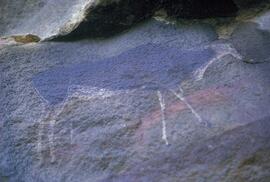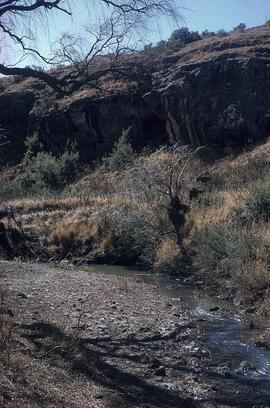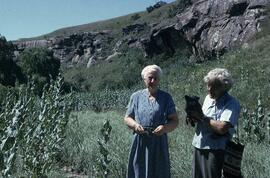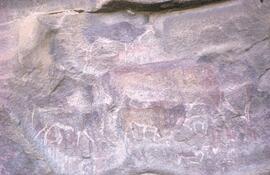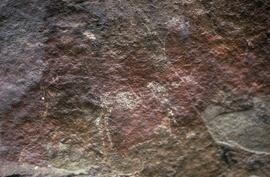Identity area
Reference code
ZA NASMUS SIMPSON
Title
Simpson, Joan
Date(s)
Level of description
Collection
Extent and medium
Collection of artifacts
Context area
Name of creator
(18/11/2004)
Biographical history
Gender: F
Nationality: South African
Created by: azizo
Created on: 18/11/2004
Amended by: stephane
Amended on: 19/10/2006
Nationality: South African
Created by: azizo
Created on: 18/11/2004
Amended by: stephane
Amended on: 19/10/2006
Name of creator
Biographical history
Repository
Archival history
Immediate source of acquisition or transfer
Content and structure area
Scope and content
Appraisal, destruction and scheduling
Accruals
System of arrangement
Conditions of access and use area
Conditions governing access
Conditions governing reproduction
Language of material
- English
Script of material
- Latin
Language and script notes
Physical characteristics and technical requirements
National Museum
Finding aids
Allied materials area
Existence and location of originals
Existence and location of copies
Related units of description
Notes area
Note
Background of the Recorder:It was late in life when Joan Simpson read Alex Wilcox' book Rock Paintings of the Drakensburg, and was inspired to take up rock art photography as a hobby. She enjoyed walking, hiking and hunting for possible rock art sites. Her journals note how she became so invested in recording rock art, she speaks of deriving 'enormous pleasure from searching for paintings and recording them, and identifying the kind of animals depicted, the weapons and dress of the people'.
However the aspect of rock art that Simpson found most compelling was its artistic merit. In a journal entry she states: '…for me, overshadowing everything else, is the enormous pleasure in the artistic merits of the paintings themselves… colour … shading … perspective … the skill needed to draw a beautiful eland… when the only implements an artist had were fashioned by himself… the sense of movement, … of pattern, The grouping, the story, sometimes the humour which a panel may tell. All these things enthralled me.'
Simpson was enthusiastic in her work, making accurate notes on the slides themselves, measuring individual figures, noting site names and dates when taken. Her dedication to her hobby is evident in her investment in photographic equipment, which included: a camera, tripod, light meter, flash, rings, extra film, a notebook and a foot-rule. She would give illustrated lectures and was attempting to write a book on the subject.
Living in Harrismith, Free State, Simpson had access to much of the rock art in that province, as a result, her most sizeable collection of slides is representative of many sites in the Free State. Simpson later moved to Natal and recorded a significant number of sites in this area. Her Collection also includes some images from Zimbabwe and Spain. In 1981, after her death, Simpson's slides, notes and books were given to the Natal Museum Archaeology department as per her will. A decade later the Natal Museum took the decision to give Simpson's Free State slides to the National Museum in Bloemfontein to be included in their archive.
Simpson began photographing rock art in the early 1960's and continued to do so into her old age in the 1970's. Her slides therefore hold great value as archival resources and as indicators of weathering and deterioration of the rock art recorded.
However the aspect of rock art that Simpson found most compelling was its artistic merit. In a journal entry she states: '…for me, overshadowing everything else, is the enormous pleasure in the artistic merits of the paintings themselves… colour … shading … perspective … the skill needed to draw a beautiful eland… when the only implements an artist had were fashioned by himself… the sense of movement, … of pattern, The grouping, the story, sometimes the humour which a panel may tell. All these things enthralled me.'
Simpson was enthusiastic in her work, making accurate notes on the slides themselves, measuring individual figures, noting site names and dates when taken. Her dedication to her hobby is evident in her investment in photographic equipment, which included: a camera, tripod, light meter, flash, rings, extra film, a notebook and a foot-rule. She would give illustrated lectures and was attempting to write a book on the subject.
Living in Harrismith, Free State, Simpson had access to much of the rock art in that province, as a result, her most sizeable collection of slides is representative of many sites in the Free State. Simpson later moved to Natal and recorded a significant number of sites in this area. Her Collection also includes some images from Zimbabwe and Spain. In 1981, after her death, Simpson's slides, notes and books were given to the Natal Museum Archaeology department as per her will. A decade later the Natal Museum took the decision to give Simpson's Free State slides to the National Museum in Bloemfontein to be included in their archive.
Simpson began photographing rock art in the early 1960's and continued to do so into her old age in the 1970's. Her slides therefore hold great value as archival resources and as indicators of weathering and deterioration of the rock art recorded.
Note
Collection obtained from: National Museum
Note
Provenance: National Museum
Note
Collection owner image: SIMPSON.jpg
Alternative identifier(s)
Access points
Subject access points
Place access points
Name access points
Genre access points
Description control area
Description identifier
Institution identifier
Rules and/or conventions used
Status
Level of detail
Partial

